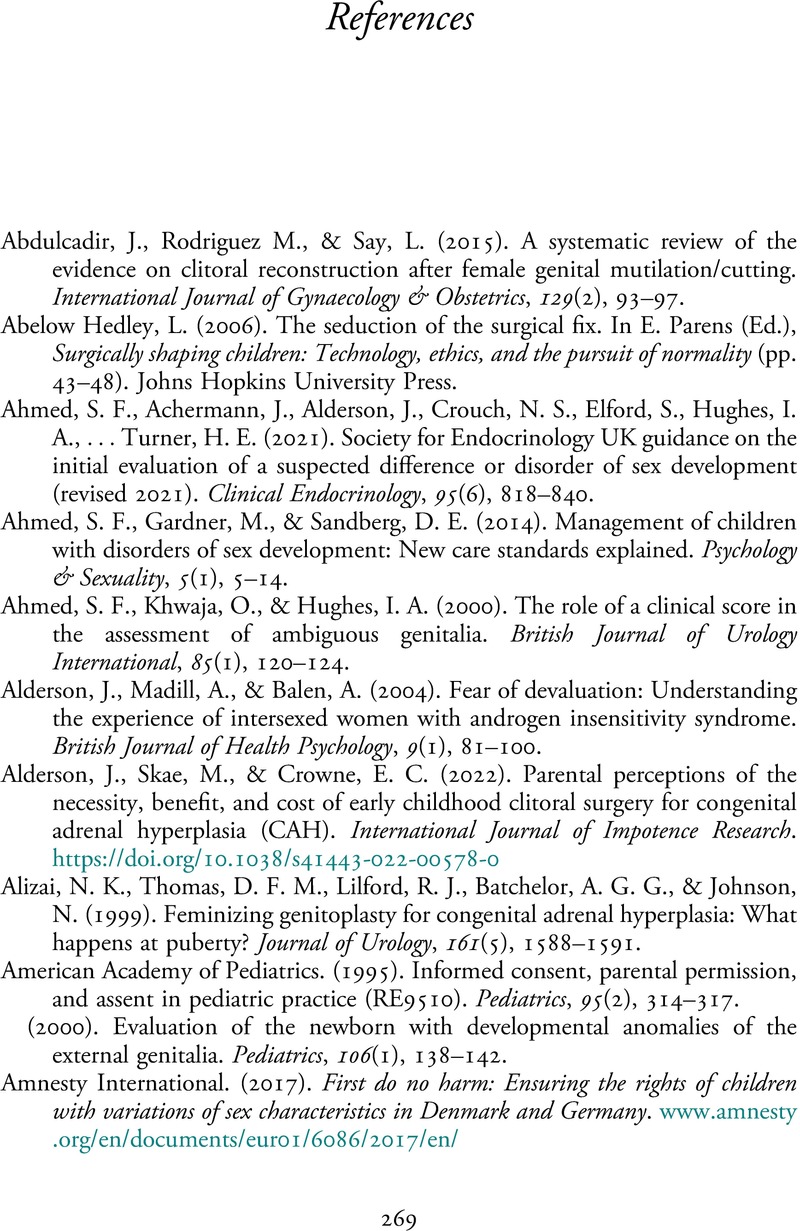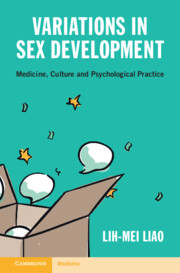Book contents
- Variations in Sex Development
- Reviews
- Variations in Sex Development
- Copyright page
- Dedication
- Contents
- Preface
- Abbreviations
- Section 1 Ordinary Lives
- Section 2 Medicalization and Resistance
- Section 3 Psychological Theories and Applications
- Section 4 Working Psychologically
- References
- Index
- Plate Section (PDF Only)
- References
- Variations in Sex Development
- Reviews
- Variations in Sex Development
- Copyright page
- Dedication
- Contents
- Preface
- Abbreviations
- Section 1 Ordinary Lives
- Section 2 Medicalization and Resistance
- Section 3 Psychological Theories and Applications
- Section 4 Working Psychologically
- References
- Index
- Plate Section (PDF Only)
- References
Summary

- Type
- Chapter
- Information
- Variations in Sex DevelopmentMedicine, Culture and Psychological Practice, pp. 269 - 295Publisher: Cambridge University PressPrint publication year: 2022



